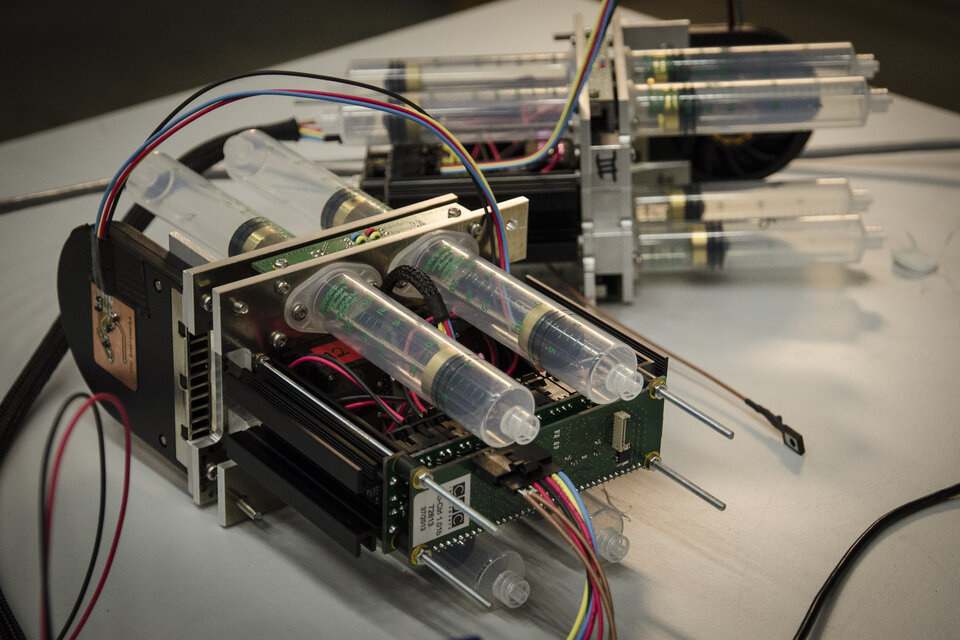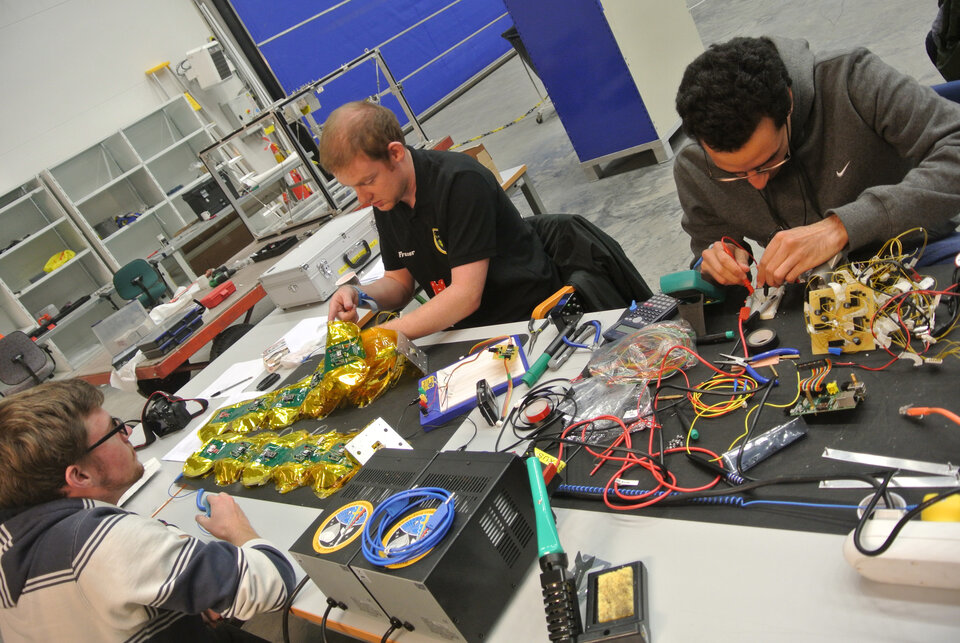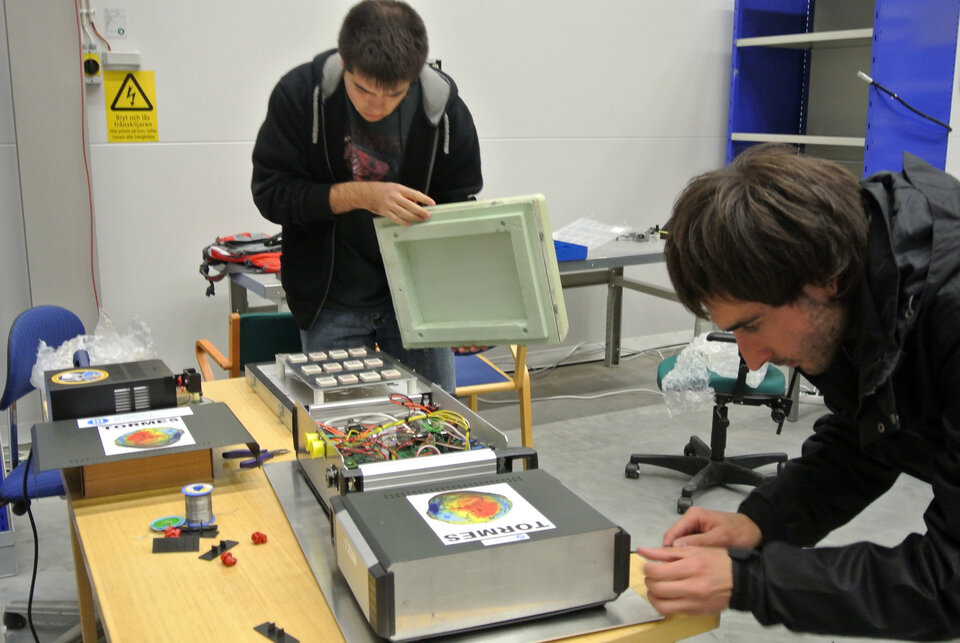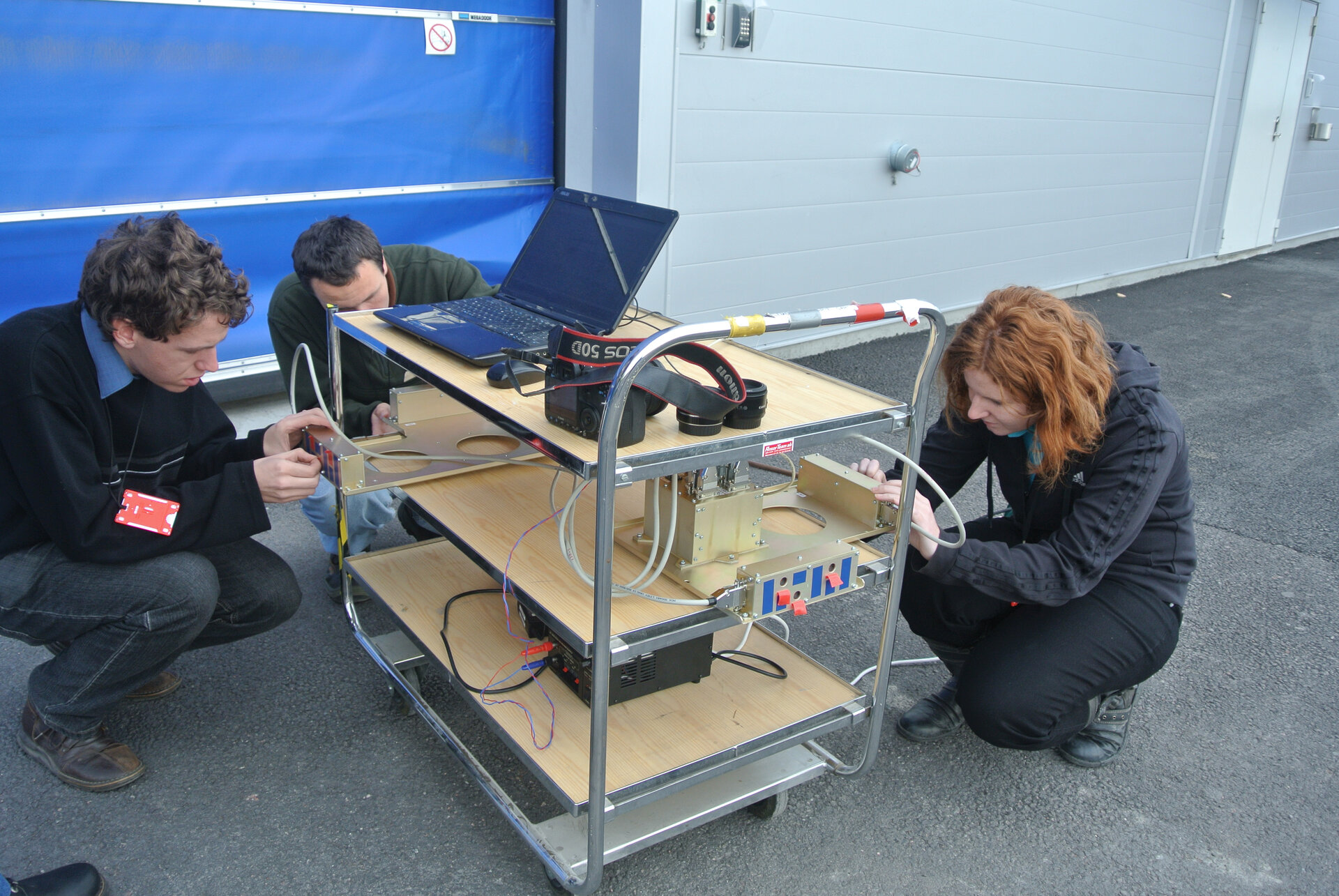Student experiments float to their goals
The latest balloon campaign in the German-Swedish student programme REXUS/BEXUS (Rocket and Balloon Experiments for University Students programme) has completed at Esrange Space Centre, Kiruna, Northern Sweden. All five of the student teams have returned home with good data, despite some technical challenges along the way.
The campaign took place from 4 to 14 October 2013. It involved twenty-four students, split into five teams, from Germany, Hungary, Italy, Spain and United Kingdom. The experiments were carried on two stratospheric balloon flights. The first, BEXUS 16, was launched on 8 October and reached an altitude of 27.5 kilometres, where it stayed for about 3 hours. The wind carried the balloon into Finland, where a recovery team returned the gondola to Esrange. It was carrying three experiments.

The Daemon experiment from Hungary tested the damaging effects of ultraviolet radiation on DNA. The balloon ascended through the layers of the atmosphere, and the samples were exposed to more ultraviolet radiation, allowing the protective nature of the atmosphere to be assessed.
The FLASH experiment from Germany carried living human cells up into the atmosphere to expose them to cosmic radiation so that they could later be analysed in the lab.

iSEDE from the United Kingdom was to test whether a satellite structure could be folded into a small box for launch, and then inflated. Unfortunately, a cable came loose and the structure failed to inflate during flight. The second part of the experiment, to test disaggregated electronics, in which control systems are spread across the surface of the inflatable structure, worked well.
A member of the iSEDE experiment said, “The team found the entire experience of BEXUS a great chance to apply our knowledge to a practical project. It was an amazing opportunity to send our experiment into the stratosphere. The launch campaign was hard work but fun at the same time.”

BEXUS 17 followed 2 days later on 10 October. It carried two experiments up to 26.8 kilometres and floated there for 4 hours 30 minutes. During the ascent, communication was unexpectedly lost with the gondola, creating a tense time as the students had to trust their experiments to work autonomously. The wind carried this balloon into Finland, too. When the recovered experiments were unloaded from the gondola, the teams could breathe a sigh of relief: both had worked and provided some interesting data.
The ARCADE-R2 experiment from Italy tested the ability of a small cubic robot to sense its location and find its way to a ‘mothership’ and dock.

TORMES from Spain, detected the way GPS signals are reflected from the ground, to gauge the changing elevation of the landscape. The reflected signals also contain climate data. For example, the water content of the soil affects the reflected signal in ways that can be measured. This data can be used to predict the effects of climate change.
A TORMES team member said, “The campaign has been very educational. The team has learned about organisation, management, and also from a scientific and a technical point of view.”
The campaign was intense. The students worked long hours with little time to rest. But the results they obtained made it all worthwhile. And the work does not stop yet. Over the coming months they have to analyse their data, write a final report and present their results to international experts.
The REXUS/BEXUS programme will continue in 2014. The deadline for applications is 21 October 2013. You can read here more information about the call for proposals.
German students can get more information here.




